Can Identical Twins Be Male and Female?
Can identical twins be male and female?
Twins of different genders are universally accepted as a sound basis for a clinical determination that boy and girl twins are not identical. However, in extremely rare cases, boy and girl twins can stem from the same fertilized egg.
Twins, who stem from the same fertilized egg, are called monozygotic twins. Washington State Twin Registry stresses that it’s an extremely rare event as only a handful of cases have been reported in the medical literature.
Inaccurate copying of the sex chromosomes in male twins, that began as monozygotic twins, have resulted in a few cases of male/female twin pairs.
A third twin type, called sesquizygotic twins, has been discovered.

Three examples that could result in male/female twins:
- There could be a glitch in copying sex chromosomes, resulting in a male zygote (fertilized egg) that starts out with an extra X chromosome (XXY). This is opposed to the usual XX for a girl or XY for a boy. Through a complicated series of events, this zygote could result in the birth of monozygotic twins who are male (XY) and female (XX). These twins would be genetically identical except for their sex chromosomes.
- After a male (XY) zygote is formed, it starts to develop and splits into two embryos (identical male twins). Early in this process, inaccurate copying of the sex chromosomes could result in the loss of the Y chromosome in some cells. The embryo that is formed from the cells missing the Y chromosome would develop into a female (XO). The other embryo would still develop into a male (XY). The twin with only one X chromosome would be female, but her cells would have only one copy of the X chromosome. This condition is called Turner Syndrome. Turner Syndrome is a chromosomal condition that affects development in females. These twins would be genetically identical except for their sex chromosomes.
- There is an extremely rare twin type that’s referred to as semi-identical twins or sesquizygotic twins. This occurs when two sperm cells fertilize one egg which then later splits. Semi-identical twins share anywhere from 50 to 100 percent of their DNA. They share 100 percent of their mother’s DNA but only a proportion of their father’s DNA. In 2019 a report was published detailing a newly discovered set of boy-girl semi-identical twins in Australia. They were discovered because they during pregnancy shared a placenta but had different genders (only identical twins can share a placenta, and only fraternal twins can have different genders).
[divider style=”dashed” align=”center” color=”” opacity=”1.00″ width=”” pull=”” padding_top=”20px” padding_bottom=”20px”]
How are identical twins formed?
A woman ovulates and releases one egg. The egg is fertilized by a sperm cell. The egg splits into two within a few days after fertilization.
The two eggs are developing rapidly into two embryos that have the same chromosomes and genes. This type of twin pregnancy is called monozygotic.
Different kinds of identical twin pregnancies
Identical twin pregnancies are either dichorionic-diamniotic (di-di twins), monochorionic-diamniotic (mo-di) or monochorionic-monoamniotic (mo-mo).
It relates to whether or not the twins share a placenta and sacs (also called membranes). Identical twin pregnancies with separate sacs and placentas are called dichorionic-diamniotic.
Identical twin pregnancies with a shared placenta and a shared outer sac – but separate inner sacs – are called monochorionic-diamniotic.
Monochorionic-monoamniotic is identical twins who share the placenta and both sacs. Mo-mo twin pregnancies are extremely rare.
Are identical twins exactly alike?
Although identical twins share the same genetic characteristics, they are not necessarily exactly alike. Environmental differences in the womb – and when the twins are growing up – can affect the way they look.
[divider style=”dashed” align=”center” color=”” opacity=”1.00″ width=”” pull=”” padding_top=”20px” padding_bottom=”20px”]
How are semi-identical twins formed?
A woman ovulates and releases one egg. Two sperm cells from two different men enter the same egg and fertilize it. The three sets of chromosomes (as opposed to the usual two) are split into two separate cell sets.
Some of the cells contain the chromosomes from the first sperm while the remaining cells contain chromosomes from the second sperm, resulting in the twins sharing only a proportion rather than 100 percent of the same DNA from the fathers.
They share the same genetic material from their mother. This type of twin pregnancy is called sesquizygotic.
Do semi-identical twins look alike?
They won’t look as alike as identical twins, but they may have more similarities than some fraternal twin pairs.
How are fraternal twins formed?
A woman ovulates and releases two eggs. The eggs are then fertilized by two different sperm cells (from the same man). This will make the twins share about 50 percent of their DNA.
In very rare cases the eggs can be fertilized by sperm from different men as well. That’s called heteropaternal superfecundation. Genetically that would make the twins half-siblings, and they would share around 25 percent of their DNA.
In both scenarios, the twins would be fraternal twins. That type of twin pregnancy is called dizygotic.
What are fraternal twin pregnancies called?
Fraternal twin pregnancies are always dichorionic-diamniotic (di-di). Fraternal twins have their own separate placentas and sacs.
Do fraternal twins look like each other?
From a genetic perspective, fraternal twins are like ordinary siblings with the exception that they have shared the womb and are born at the same time. “Ordinary” siblings share around 50 percent of their DNA, similar to fraternal twins.
We hope we’ve answered your questions about whether or not identical twins can be male and female. Please leave a reply to this article if you have more questions about monozygotic twins with different genders.
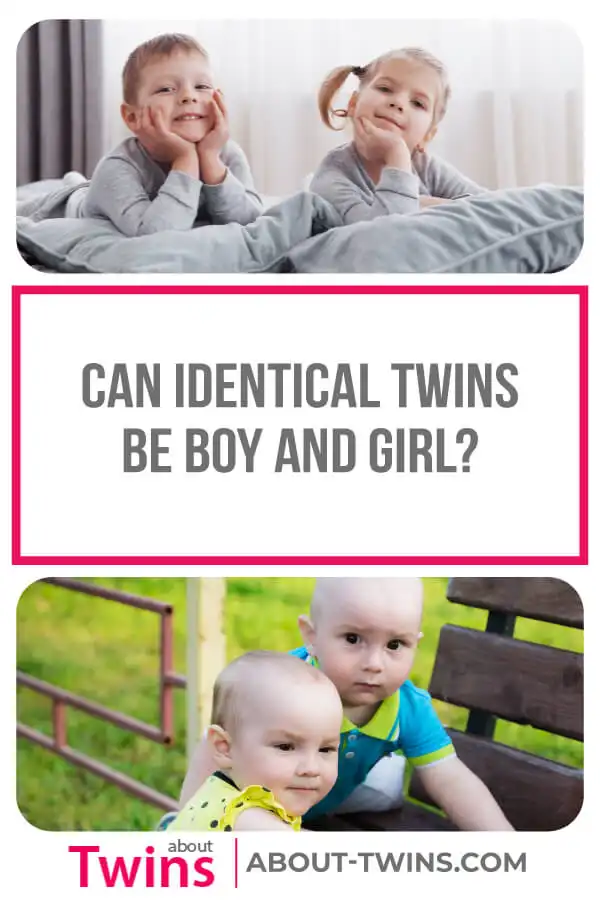
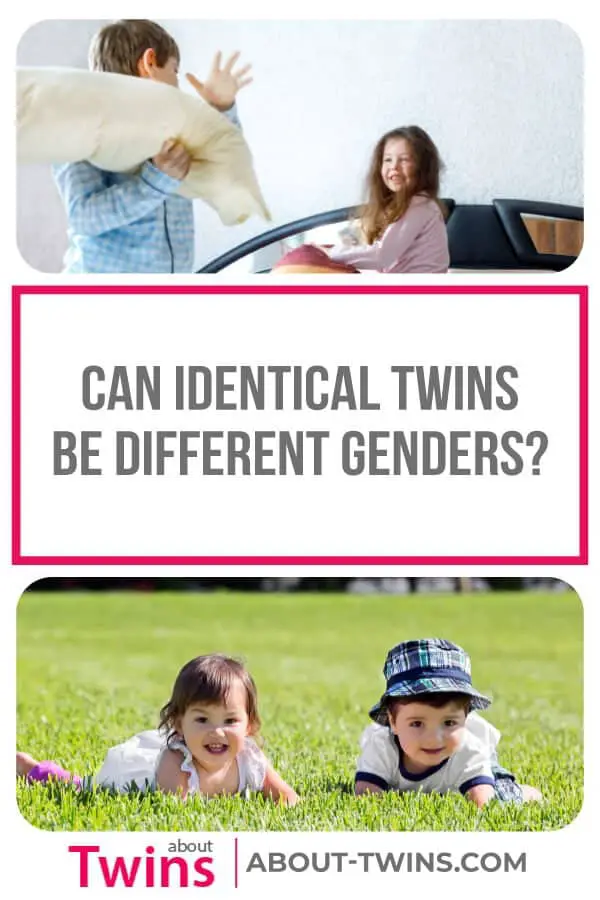

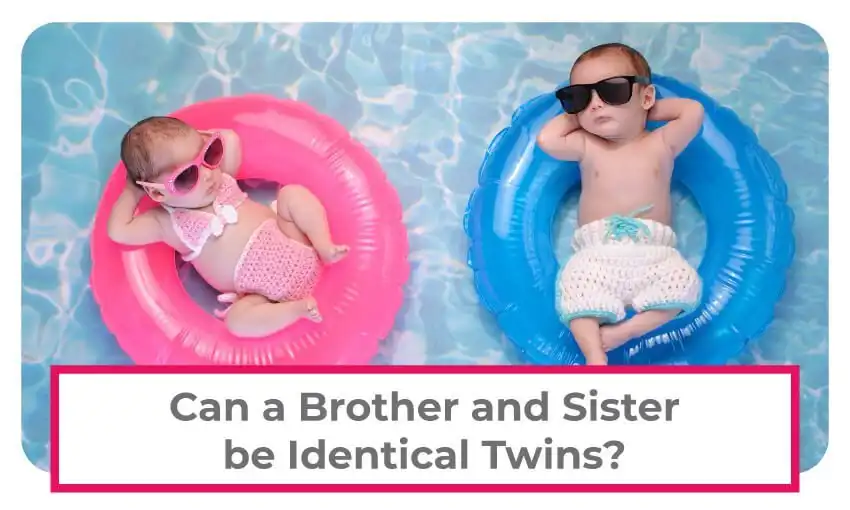
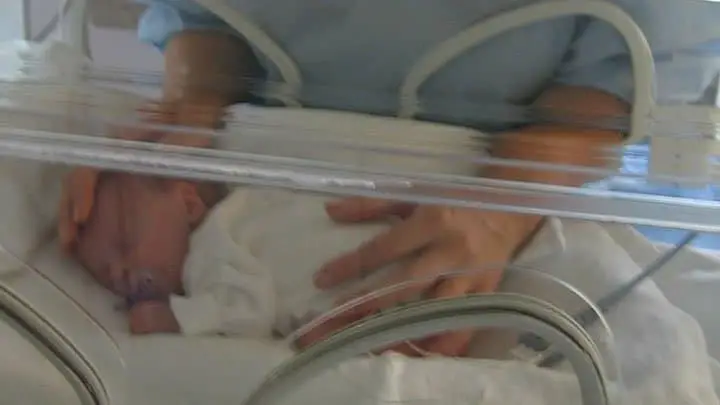


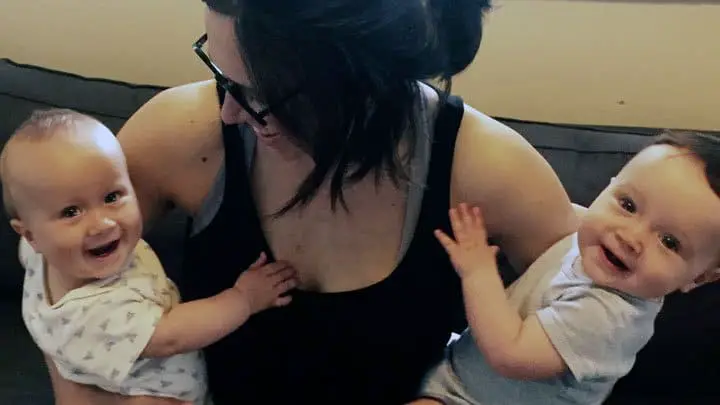

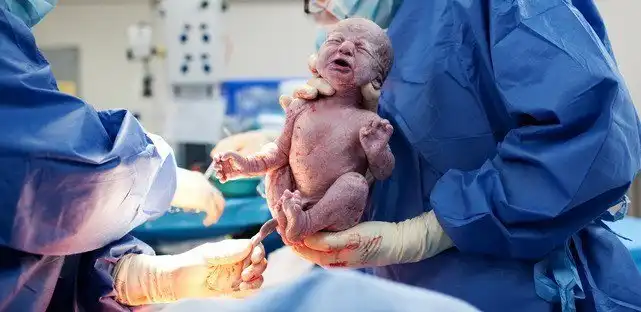
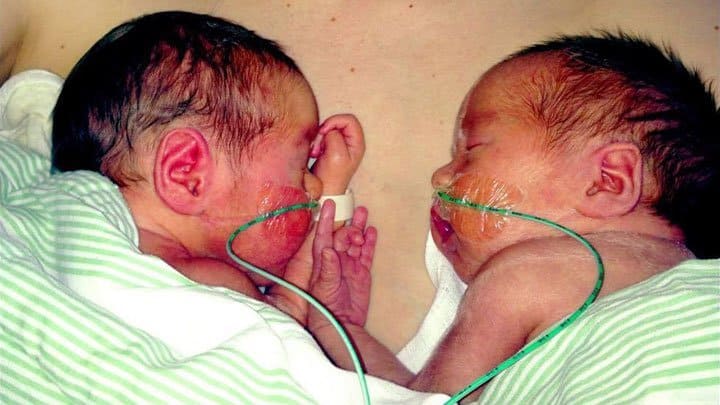
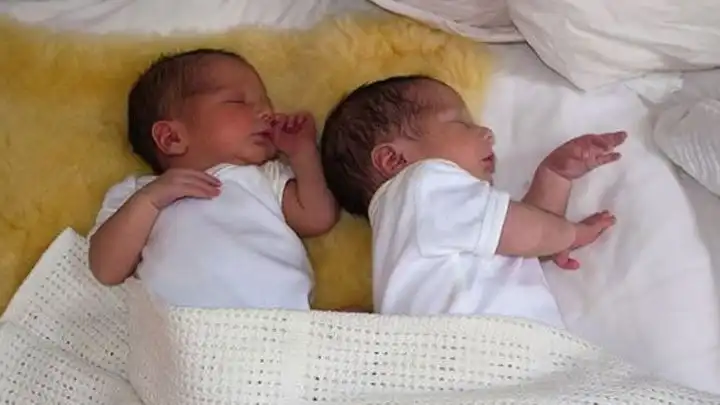
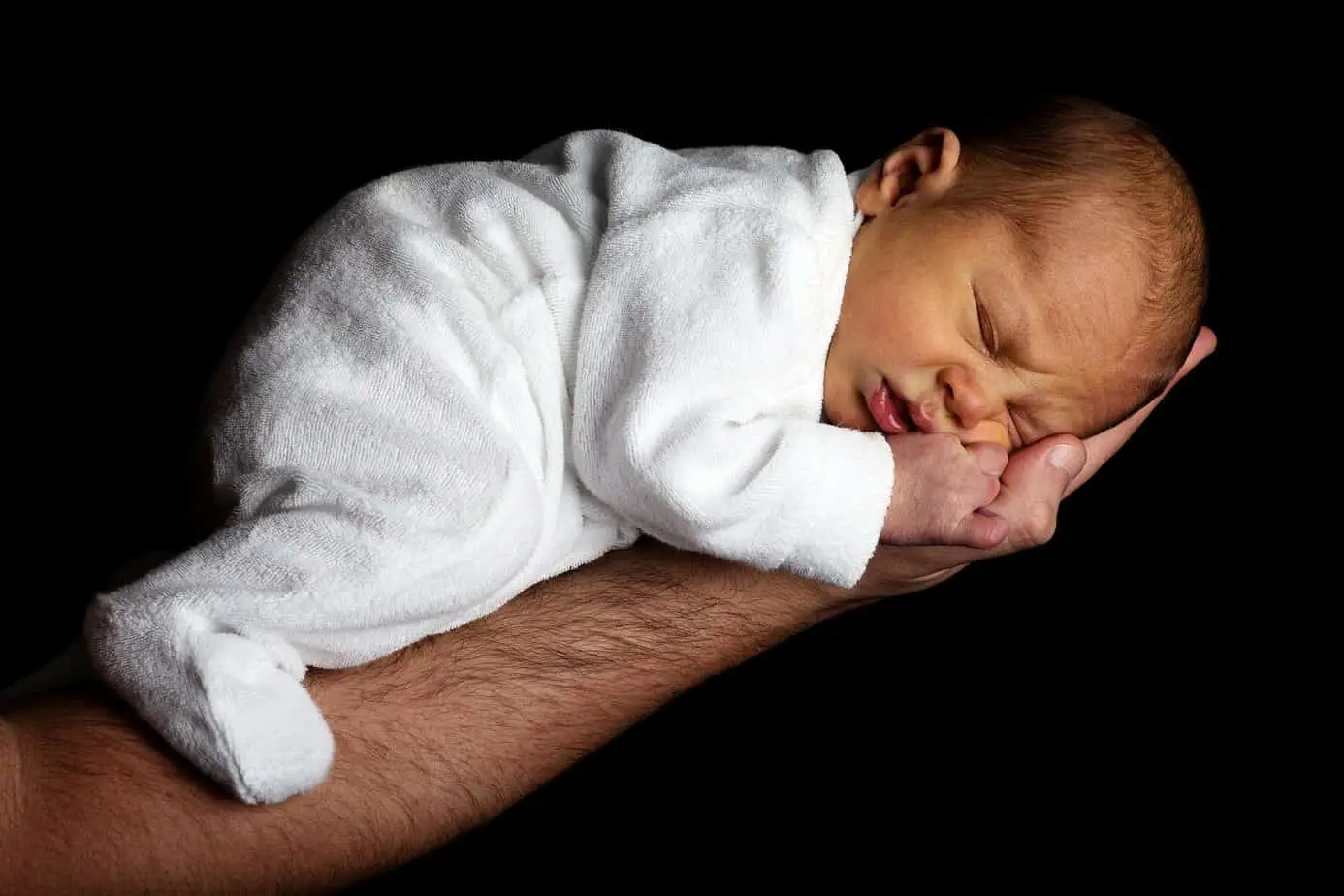
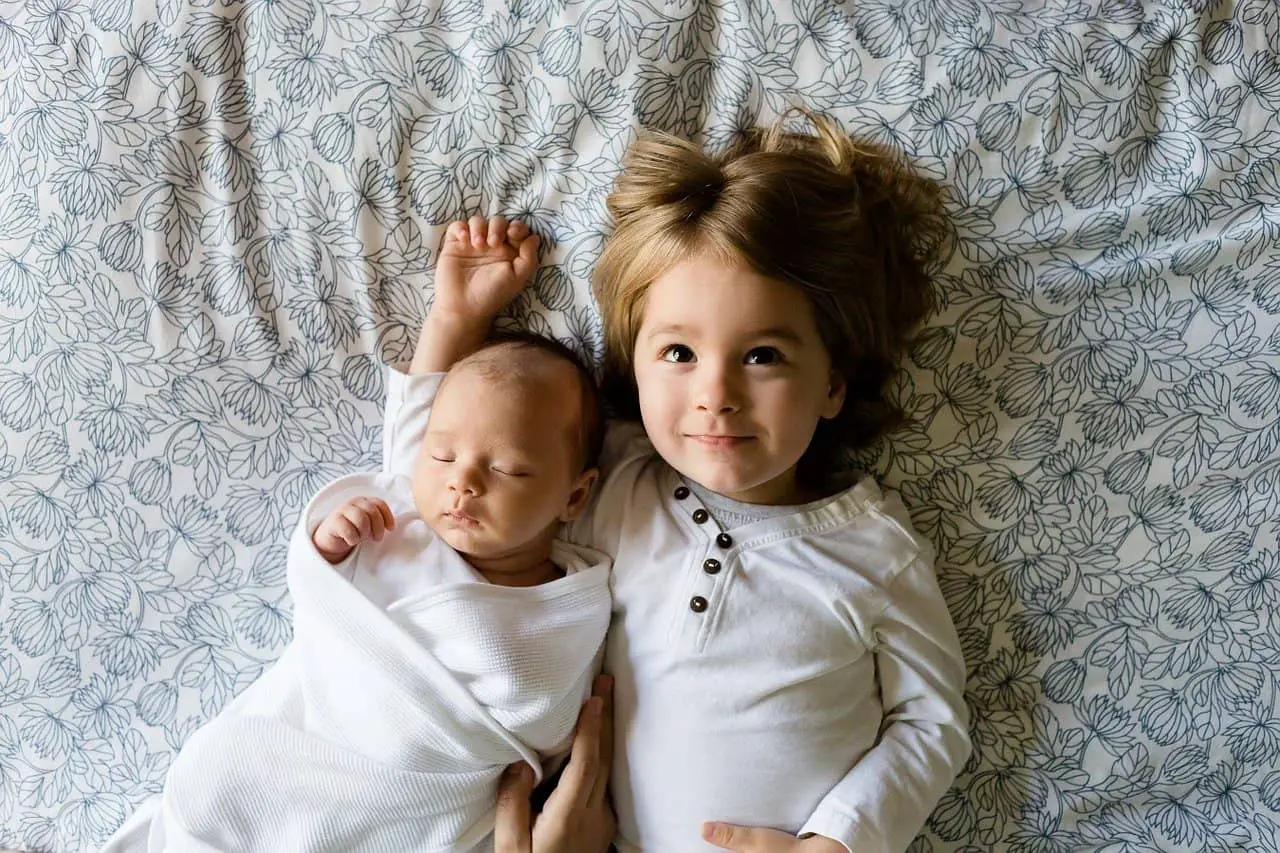





I’m unsure where I fit into all of this but I got my genetic testing done and so did my twin brother and we share 100% dna. I am intersex so I believe we were most likely meant to be identical but something happened along the way to make me an intersex female and him a “normal” male. Really interesting to find that we’re not alone. Thanks for the article :)
Hi Chelsea.
Thank you for sharing. I believe you may be right. If you share 100 % dna, you were most likely meant to be identical. You are definitely not alone :)
The term “identical twin” or “ fraternal twin” refers only to a unique genetic and chromosomal makeup i.e. one egg splitting into two. It does not refer to behavior or physical appearance. In theory two people could look and behave “identically” and not be twins at all.
Living in Jos plateau state nigeria.lost my identical boy and girl twin babies to twin twin transfusion syndrome,two weeks ago. it’s so painful.
Agnes, our deepest condolences for your loss. Are you aware of the Center for Loss in Multiple Birth (CLIMB)? They have a lot of information regarding loss on their website including interviews with mothers: http://www.climb-support.org
But with 22 other xx pairs that are identical, doesn’t this make them much more genetically the same than normal fraternal twins?
Hi Dennis,
Thank you for your question. We need to discuss your question with an expert in twin research / genetics – then we’ll answer you and update the article accordingly. If you want to be notified about updates to this article (and articles on about-twins.com in general), you’re more than welcome to sign up for our newsletter. We’ll be in touch!
Hi Dennis,
We just heard back from the Washington State Twin Registry and have updated the article. You’re right in your assumption that they are much more genetically the same – they are genetically identical, except for their sex chromosomes.
Therefore it is NOT possible. The MOMENT that the XXY splits to XX XY it is OBVIOUS that the two X’s are not necessarily genetically identical and that the XY is only ONE off those X set of chromosomes, the Y is totally different. The fact that the Y is genetically different assures that they are NOT identical.
It does however mean that there was a “correction” genetically to assure that the life being formed did not die off and it is a non-standard condition.
Remember that BOTH X factors came from the mother…..there are no two ways around that. You could say that they came from a very strange and unusual genetic anomaly but they are definitely NOT identical at all. IF the extra X and Y came from the father it would be totally different than if the extra X came from the mother. IT would also mean that TWO sperm or a genetically variant sperm won the race If the XX came from the mother is would likewise mean that the egg is abborent.
Hi,
Thank you for your comment.
We do need to update/correct this article. As you point out the XXY split to XX & XY would not result in two identical individuals – but rather two genetically different individuals that (could) stem from 1 egg/1 sperm cell, as with identical twins. Thanks for drawing our attention to this!